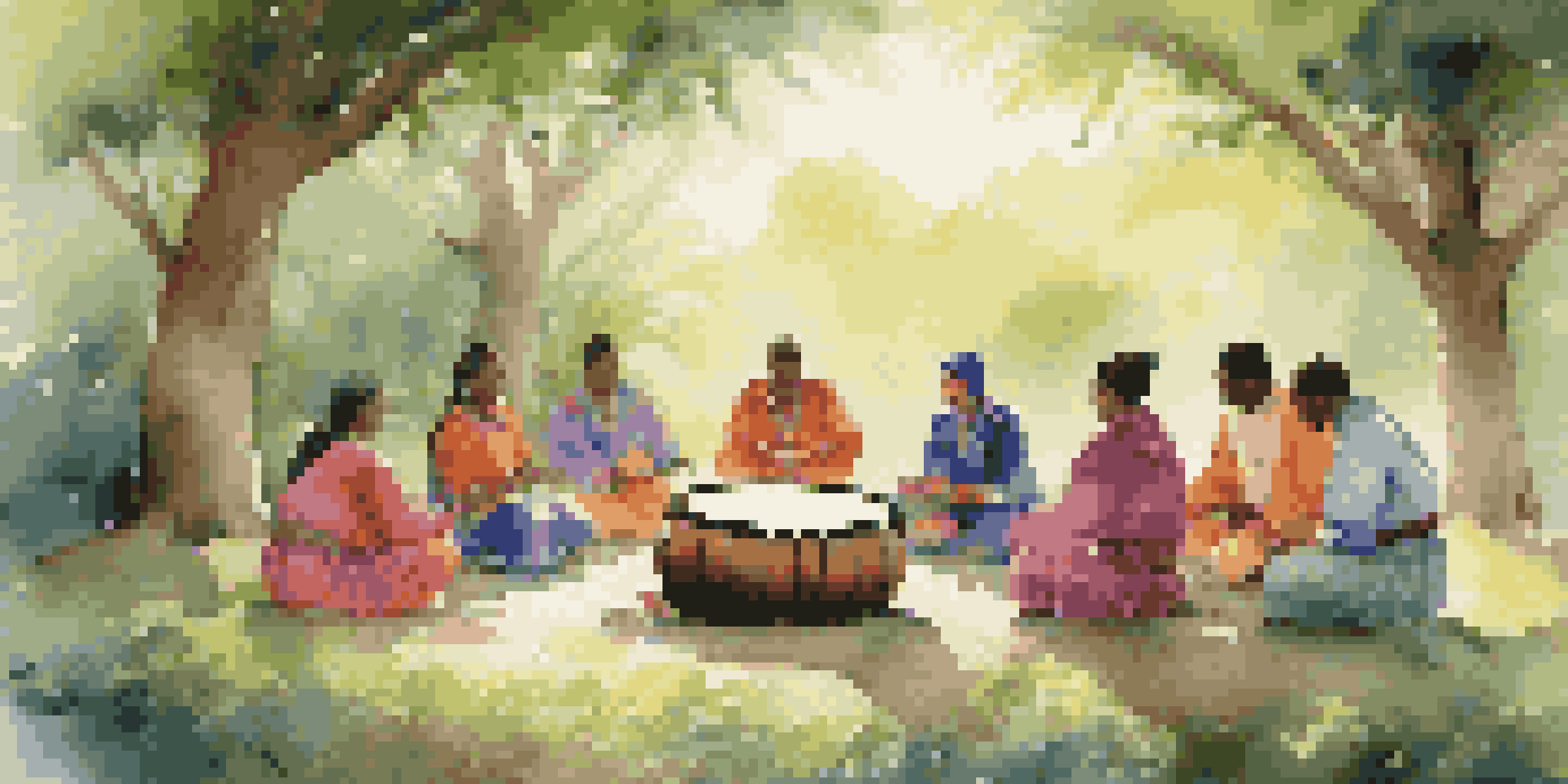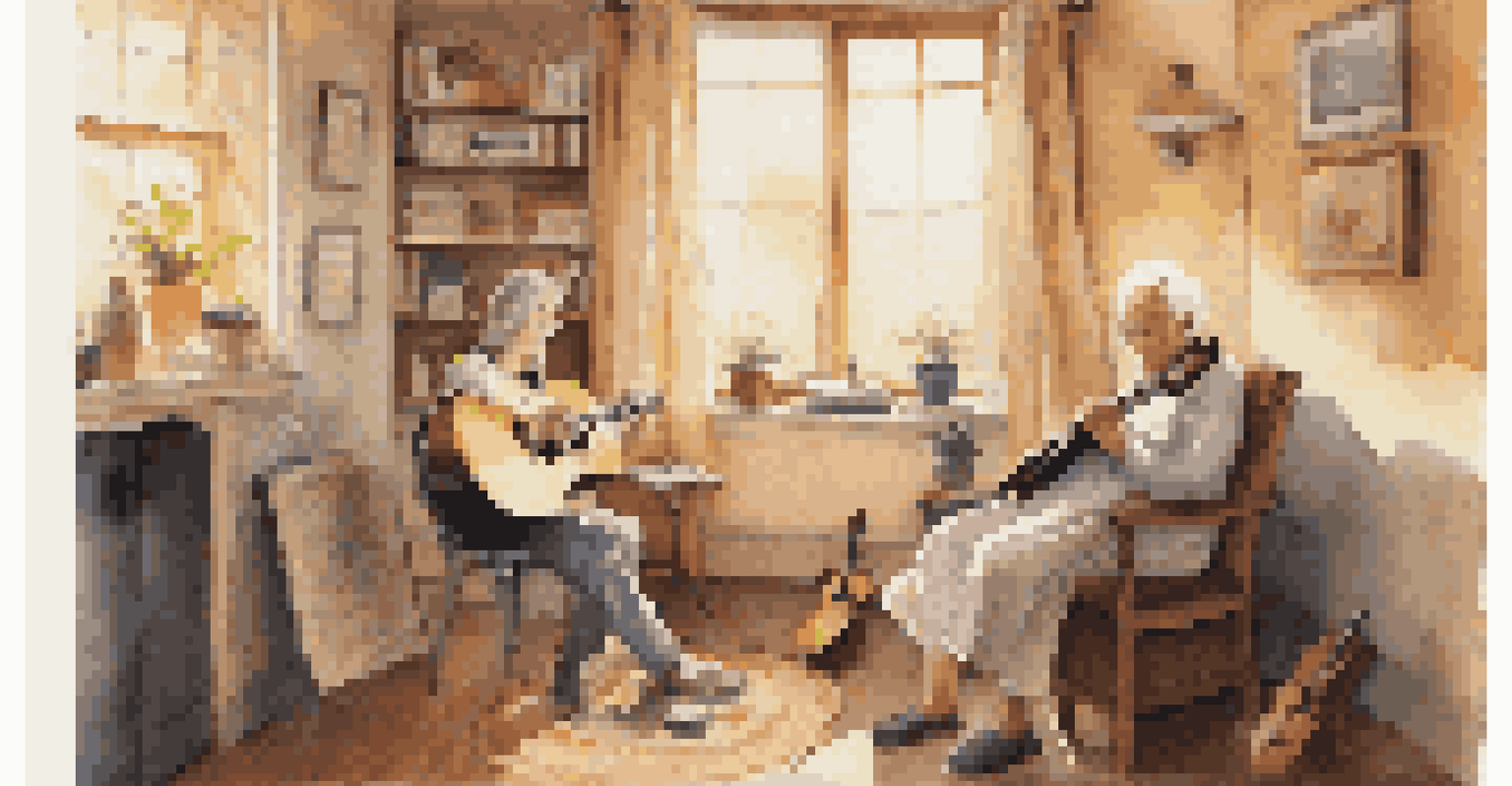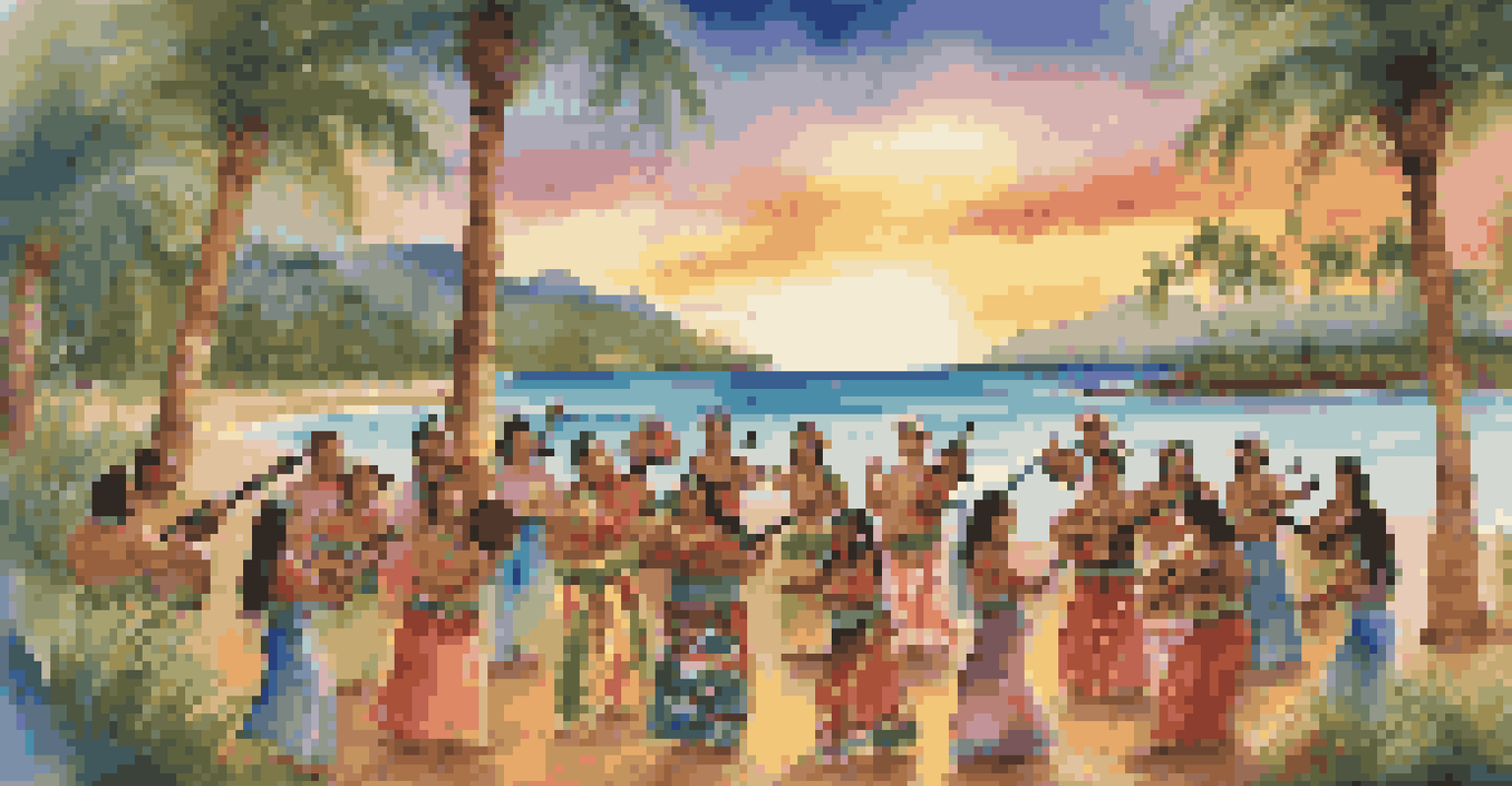The Use of Music in Healing Rituals Across Cultures

The Universal Language of Music in Healing
Music is often referred to as a universal language, and for good reason. Across various cultures, it serves as a powerful tool for healing, connecting individuals with their emotions and community. Whether it’s the soothing sounds of a lullaby or the rhythmic beat of a drum, music can evoke feelings of comfort and safety during healing rituals.
Music can change the world because it can change people.
In many societies, music is integrated into spiritual practices, enhancing the overall experience of healing. It provides a soundtrack to rituals, shaping the atmosphere and deepening the emotional resonance of the moment. This shared experience can foster a sense of belonging and support, crucial during times of distress.
Research shows that music can trigger the release of endorphins, the body's natural painkillers, which is why it’s often used in therapeutic settings. From traditional ceremonies to modern therapy sessions, the healing power of music remains a constant thread that ties us together across cultures.
Traditional Healing Practices and Music
Many cultures have long-standing traditions that incorporate music into their healing practices. For instance, Indigenous tribes in North America often use drumming and singing in their ceremonies to promote physical and spiritual well-being. This dynamic interplay of rhythm and melody is believed to create a sacred space where healing can occur.

Similarly, traditional African healing practices employ music as a means to connect with ancestors and spirits. The use of chants and communal singing not only uplifts the participants but also reinforces cultural identity. These rituals often involve the whole community, emphasizing that healing is a collective journey.
Music as a Healing Universal Language
Music transcends cultural boundaries, serving as a powerful tool for emotional connection and healing in various societies.
Moreover, in various Asian cultures, such as in India with its raga music, specific melodies are thought to correspond with different emotional and physical states. This intricate relationship between music and healing illustrates the deep-rooted belief in music's transformative power across different societies.
The Role of Music in Modern Therapeutic Settings
In today’s world, music therapy has gained recognition as a legitimate form of treatment for various mental and physical ailments. Certified music therapists design tailored sessions that use music to address specific therapeutic goals, such as reducing anxiety, improving mood, or enhancing cognitive function. This modern approach bridges traditional practices with contemporary science.
Where words fail, music speaks.
For example, hospitals often use music to create a calming environment for patients undergoing surgery or recovery. Studies have shown that listening to music can lower blood pressure and reduce the perception of pain, making it a valuable addition to patient care. The soft melodies played in waiting rooms can ease anxiety, making the healthcare experience less daunting.
Additionally, music therapy has been shown to be effective for individuals with dementia or Alzheimer’s disease. Familiar tunes can trigger memories and emotions, providing a sense of comfort and connection for both patients and their caregivers. This illustrates how music continues to play a significant role in healing, even in modern therapeutic practices.
Cultural Variations: Music in Healing Across the Globe
While the use of music in healing rituals is universal, the specific practices vary widely across cultures. For instance, in Hawaiian culture, the practice of 'ho'oponopono' involves chanting and traditional songs as a means to resolve conflicts and promote healing within the family. This unique approach emphasizes the importance of harmony and forgiveness in the healing process.
In contrast, the Japanese practice of 'shinto' often incorporates the use of traditional instruments like the shamisen and taiko drums in rituals to honor spirits and ancestors. The rhythmic beat of the drums can create a sense of urgency and energy, facilitating a connection to the spiritual realm. Each culture's unique musical expressions reflect its values and beliefs surrounding healing.
Therapeutic Benefits of Music Today
Music therapy is recognized as an effective treatment for mental and physical ailments, blending traditional practices with modern science.
This variety in musical expression demonstrates how deeply ingrained these practices are within cultural identities. By understanding these differences, we can appreciate the diverse ways in which music fosters healing and connection across the globe.
Music as a Means of Emotional Expression in Healing
One of the most profound aspects of music in healing rituals is its ability to facilitate emotional expression. In many cultures, music serves as a conduit for feelings that may be difficult to articulate verbally. Through singing, dancing, or playing instruments, individuals can express joy, sorrow, and everything in between, allowing for catharsis and healing.
For example, in Latin American cultures, traditional folk music often reflects themes of loss and resilience, enabling communities to process grief collectively. The act of coming together to sing and share stories can be a powerful means of support, reinforcing social bonds during challenging times. This communal experience fosters healing on both personal and collective levels.
Moreover, personal music preferences can also play a significant role in individual healing journeys. Many people find comfort in listening to songs that resonate with their experiences, helping them to process their emotions. This personal connection to music showcases its versatility as a healing tool, adaptable to individual needs and cultural contexts.
Scientific Insights into the Healing Power of Music
As interest in the relationship between music and healing grows, so does scientific research supporting its benefits. Studies have demonstrated that listening to music can reduce cortisol levels, the hormone associated with stress, leading to a more relaxed state. This physiological response highlights how deeply connected our bodies are to the sounds we hear.
Furthermore, research in neuroplasticity shows that engaging with music can enhance cognitive functioning and emotional regulation. The brain's ability to reorganize itself means that musical engagement can lead to positive changes in mental health. This is particularly significant for individuals recovering from trauma or dealing with mental health challenges.
Cultural Variations in Healing Music
Different cultures employ unique musical practices in healing rituals, reflecting their distinct values and beliefs regarding health and wellness.
Ultimately, the scientific community continues to uncover the complexities of how music influences our physiological and psychological well-being. By merging traditional knowledge with modern research, we can better understand and harness music's healing potential in a variety of settings.
The Future of Music in Healing Practices
Looking ahead, the integration of music in healing practices is likely to evolve even further. With advancements in technology, virtual music therapy sessions are becoming more common, allowing individuals to access therapeutic benefits from the comfort of their homes. This shift opens doors for those who may have previously faced barriers to accessing traditional therapy.
Moreover, as awareness of mental health continues to grow globally, music therapy is gaining traction as a recognized form of treatment. More healthcare providers are beginning to incorporate music therapy into their practices, recognizing its effectiveness in promoting holistic well-being. This integration reflects a shift toward more comprehensive care that values emotional and psychological health.

As we embrace the future, the potential for music to enhance healing rituals across cultures remains vast. By honoring traditional practices while also adapting to contemporary needs, we can ensure that the healing power of music continues to resonate in our lives.